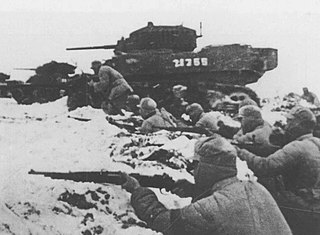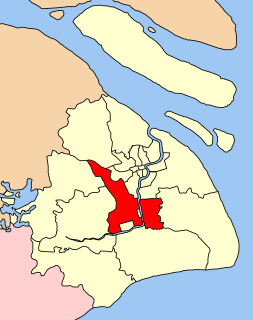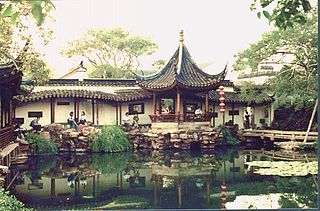 W
WOn 21 March 2019, a major explosion occurred at a chemical plant in Chenjiagang Chemical Industry Park, Chenjiagang, Xiangshui County, Yancheng, Jiangsu, China. According to reports published on March 25, 78 people were killed and 617 injured.
 W
WThe Battle of Xuzhou was a military conflict between the Empire of Japan and the Republic of China forces in May 1938 during the Second Sino-Japanese War.
 W
WCao Cao's invasion of Xu Province was a punitive invasion launched by the warlord Cao Cao against Tao Qian, the Governor of Xu Province, in the late Eastern Han dynasty. The casus belli for the invasion was the murder of Cao Cao's father, Cao Song, in Xu Province. Although Tao Qian's culpability was questionable, Cao Cao nonetheless held him responsible. The invasion took place in two separate waves in 193 and 194, during each of which Cao Cao captured a number of towns and engaged in collective punishment of the civilian populace.
 W
WThe Huaihai campaign, or Battle of Hsupeng, was one of the military conflicts in the late stage of the Chinese Civil War between the Kuomintang and the Communist Party of China. The campaign started when the People's Liberation Army (PLA) launched a major offensive against the Kuomintang headquarters in Xuzhou on 6 November 1948, and ended on 10 January 1949 when the PLA reached the north of the Yangtze.
 W
WOn the afternoon of June 23, 2016, a severe thunderstorm produced a large, violent tornado over Jiangsu province, China. Striking areas along the outskirts of Yancheng around 2:30 p.m. local time, the tornado killed at least 99 people and injured 846 others (152 critically). The China Meteorological Administration later ranked the tornado as an EF4 on the Enhanced Fujita scale.
 W
WLiangzhe Circuit (997–1160s) was one of the major circuits during the Song dynasty (960–1279). Its administrative area corresponds roughly to modern Zhejiang, Shanghai, and southern Jiangsu. The fertile Yangtze River Delta lay within Liangzhe Circuit, as did Lake Tai. Liangzhe was the wealthiest circuit in Song.
 W
WThe Liangzhu culture was the last Neolithic jade culture in the Yangtze River Delta of China. The culture was highly stratified, as jade, silk, ivory and lacquer artifacts were found exclusively in elite burials, while pottery was more commonly found in the burial plots of poorer individuals. This division of class indicates that the Liangzhu period was an early state, symbolized by the clear distinction drawn between social classes in funeral structures. A pan-regional urban center had emerged at the Liangzhu city-site and elite groups from this site presided over the local centers. The Liangzhu culture was extremely influential and its sphere of influence reached as far north as Shanxi and as far south as Guangdong. Liangzhu site was perhaps among the oldest Neolithic sites in East Asia that would be considered a state society. The type site at Liangzhu was discovered in Yuhang County, Zhejiang and initially excavated by Shi Xingeng in 1936. A 2007 analysis of the DNA recovered from human remains shows high frequencies of Haplogroup O1 in Liangzhu culture linking this culture to modern Austronesian and Tai-Kadai populations. It is believed that the Liangzhu culture or other associated subtraditions are the ancestral homeland of Austronesian speakers.
 W
WThe Majiabang culture was a Chinese Neolithic culture that existed at the mouth of the Yangtze River, primarily around Lake Tai near Shanghai and north of Hangzhou Bay. The culture spread throughout southern Jiangsu and northern Zhejiang from around 5000 BC to 3300 BC. The later part of the period is now considered a separate cultural phase, referred to as the Songze culture.
 W
WThe Northern Chinese Famine of 1876–1879 occurred during the late Qing dynasty in China. It is usually referred to as Dīngwù Qíhuāng (丁戊奇荒) in China. A drought began in northern China during 1875, resulting in crop failures during the years succeeding. The provinces of Shanxi, Zhili, Henan, Shandong and the northern parts of Jiangsu were affected. Between 9 and 13 million people died as a result of the famine, out of 108 million in the five affected provinces.
 W
WThe Qidong protest was an environmental protest against a proposed waste water pipeline in the Chinese city of Qidong province. The protest took place on 28 July 2012. The pipeline, which would have dumped industrial waste water into the sea, was to be part of a paper factory owned jointly by Japan's Oji Paper Company. Thousands of citizens took to the streets demanding the cancellation of the project, citing environmental concerns. An estimated 1,000 protesters stormed government offices, overturning vehicles, and forcing the city's mayor to strip off his shirt and instead wear a T-shirt with protest messages. Protests ended after the government promised to permanently suspend the project.
 W
WThe Roman Catholic Metropolitan Archdiocese of Nanjing is an ecclesiastical territory or diocese of the Roman Catholic Church in China. It was erected as the Apostolic Vicariate of Nanjing in 1659 by Pope Alexander VII, and promoted to a diocese by Pope Alexander VIII on April 10, 1690. However, the diocese was demoted to the Apostolic Vicariate of Kiangnan on January 21, 1856 by Pope Pius IX, and its name was later changed to the Apostolic Vicariate of Kiangsu on August 8, 1921 and to the Vicariate Apostolic of Nanjing on May 1, 1922. Pope Pius XII elevated it on April 11, 1946 to the rank of a metropolitan archdiocese, with the suffragan sees of Haimen, Shanghai, Suzhou, and Xuzhou.
 W
WShanghai County was a county in modern day Shanghai Municipality, in China. Shanghai County was first established in 1292 and finally abolished in 1992. Shanghai County was for most of its existence a part of Songjiang Prefecture, in Jiangsu Province, but later became a county under Shanghai Municipality. Shanghai County was historically the governing authority of the Shanghai's urban area and neighbouring areas. Its extent reduced with the establishment of the Shanghai Special Municipality and, later, Shanghai Municipality. Immediately before abolition, the county extended over a crescent-shaped area adjacent to, and surrounding, the southwest of Shanghai's city centre.
 W
WShi Kefa, courtesy names Xianzhi and Daolin, was a government official and calligrapher who lived in the late Ming dynasty. He was born in Xiangfu and claimed ancestry from Daxing County, Shuntian Prefecture. He was mentored by Zuo Guangdou (左光斗). He served as Grand Secretary in the Ministry of War in Nanjing during the early part of his career. He is best remembered for his defence of Yangzhou from the Qing dynasty, and was killed when Yangzhou fell to Qing forces in April 1645. After his death, the Southern Ming dynasty granted him the posthumous name "Zhongjing". Nearly a century later, the Qianlong Emperor of Qing granted Shi Kefa another posthumous name, "Zhongzheng" His descendants collected his works and compiled them into a book titled Lord Shi Zhongzheng's Collections (史忠正公集).
 W
WThe Songze Culture was a Neolithic culture that existed between 3800 and 3300 BCE in the Lake Tai area near Shanghai.
 W
WSouth Zhili, formerly romanized as Nan Chih-li or simply discussed under various romanizations of Nanjing, was a province of Imperial China, under the Ming dynasty. It was established around the "reserve capital" Nanjing and included parts of the modern provinces of Jiangsu and Anhui, as well as the direct-administered municipality of Shanghai. Under the Qing dynasty, Nanjing lost its status as the "second capital" and Southern Zhili was reconstituted as the smaller province of Jiangnan, while North Zhili became Zhili Province.
 W
WWu was one of the states during the Western Zhou dynasty and the Spring and Autumn period. It was also known as Gouwu or Gongwu from the pronunciation of the local language.
 W
WThe State of Xu was an independent Huaiyi state of the Chinese Bronze Age that was ruled by the Ying family (嬴) and controlled much of the Huai River valley for at least two centuries. It was centered in northern Jiangsu and Anhui.
 W
WThe Yangzhou massacre in May, 1645 in Yangzhou, China, refers to the mass killings of innocent civilians in Yangzhou by Manchu and defected northern Chinese soldiers, commanded by the Manchu general Dodo.
 W
WThe Yangzhou riot of August 22–23, 1868 was a brief crisis in Anglo-Chinese relations during the late Qing dynasty. The crisis was fomented by the gentry of Yangzhou who opposed the presence of foreign Christian missionaries in the city, who claimed that they were legally residing under the provisions of the Convention of Peking. Threats against the missionaries were circulated by large character posters placed around the city. Rumors followed that the foreigners were stealing babies and killing them to make medicine.
 W
WYue, also known as Yuyue (於越), was a state in ancient China which existed during the first millennium BC – the Spring and Autumn and Warring States periods of China's Zhou dynasty – in the modern provinces of Zhejiang, Shanghai and Jiangsu. Its original capital was Kuaiji ; after its conquest of Wu, the Kings of Yue moved their court north to the city of Wu and survived until 214 BC. When the Chinese were reunified into Qin Dynasty, Yue become a vassal of the Chinese state.
 W
WThe Yueshi culture was an archaeological culture in the Shandong region of eastern China, dated from 1900 to 1500 BC. It spanned the period from the Late Neolithic to the early Bronze Age. In the Shandong area, it followed the Longshan culture period, and was later replaced by the Erligang culture.
 W
WZhongli was an ancient Chinese state in the Huai River valley during the Spring and Autumn period. Its core area was located in the modern-day Fengyang County. At its peak, Zhongli was powerful enough to fight off various other states, and served as an important cultural, political, and economic centre. The state was conquered by its expansionist neighbor Chu during the 6th century BC, but its former capital city remained regionally important for several subsequent centuries.